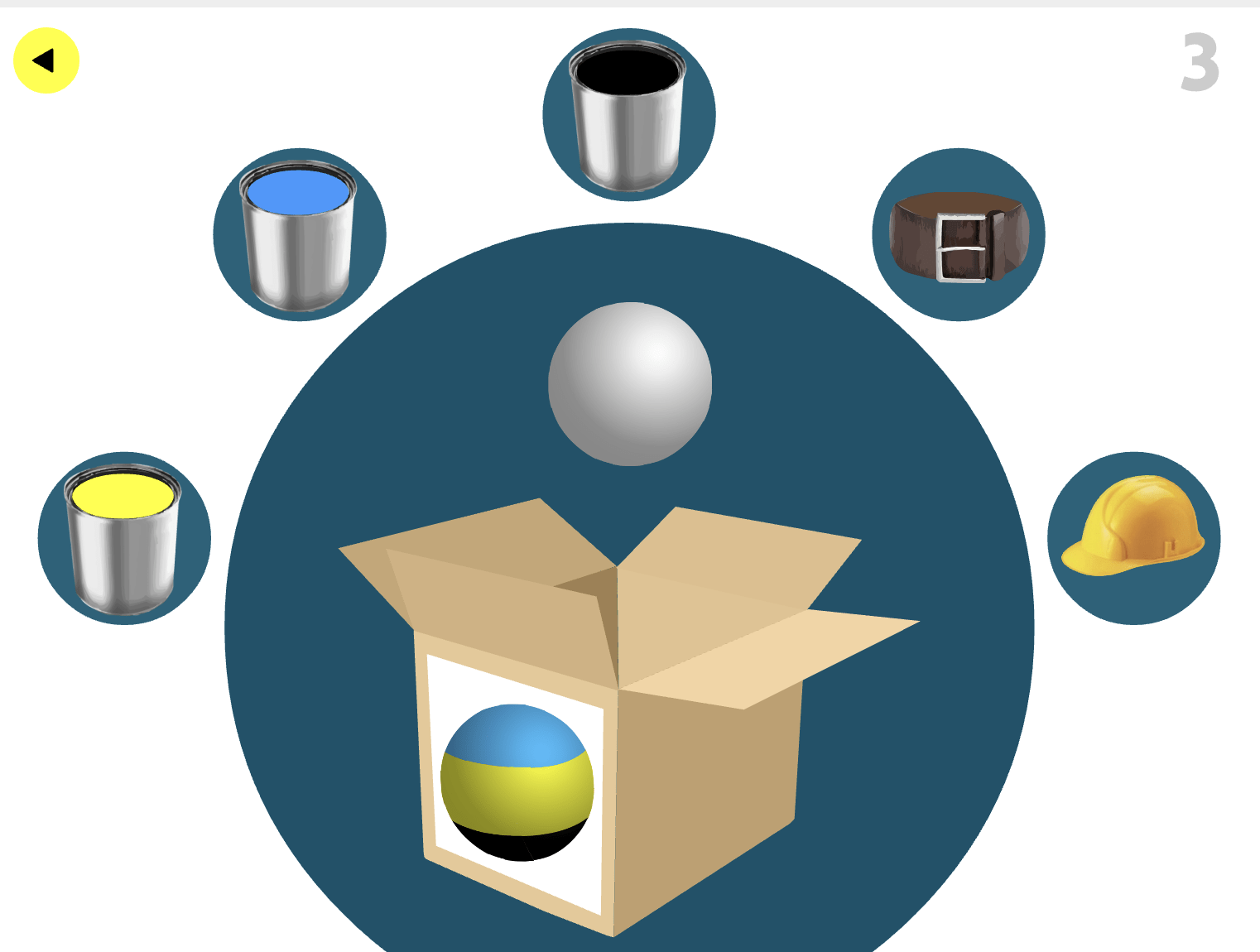For this critical play, I decided to revisit a childhood classic – Factory Balls. After cool math games shut down, I had accepted the fact that I would never again doll up factory balls in goggles and wigs to design intricate patterns, so was super excited to see this listed as an option. Factory Balls, developed by Bart Bonte and available on Steam, BartBonte.com, itch.io, iOS, and Android, is targeted towards players of all ages, including both my 6-year-old and 21-year-old self. While I enjoyed my experience playing Factory Balls just as much as I did when I was 6, by playing it through the lens of a game designer, it was clear that the player’s experience is deeply intertwined with the game’s mechanics. By challenging players to use simple tools to transform plain balls into complexly designed products, the game’s mechanics not only demand creative problem-solving that tests their logical and sequential thinking, but also offer a thoughtful respite from the fast-paced action of other games.
This simple yet sophisticated mechanic of applying various paints and costumes to design balls fosters a gameplay environment that encourages strategic planning and creative experimentation. The game intentionally ramps players from simple to more complex puzzles, walking them through the sequential – but creative – logic required to manipulate paint, goggles, and more to eventually create spellbinding patterns. By structuring the game in this manner, Factory Balls helps players develop a high degree of pattern recognition and strategic thinking. Typically, the key to solving the next puzzle was to rely on previous knowledge of patterns, and then apply a new tool or paint in a creative manner. As someone who has always loved a challenge, this incremental style of gameplay and learning was invigorating. I had a blast. It was interesting to note that although there was no timer, I found the game best enjoyed when pushing to complete puzzles quickly and efficiently.
Moreover, a thorough analysis of Factory Balls’ mechanics illuminates why it found a home on an educational site. Factory Balls stands out not just as a source of entertainment but as a tool for intellectual growth. Players learn to recognize patterns and understand the sequential impacts of their actions, mirroring problem-solving processes needed in real-world scenarios. While many puzzle games rely on speed and quick decision-making, Factory Balls offers a contemplative approach that rewards patience and thoughtfulness. In terms of thinking fast and slow, it definitely requires players to rely on their “system two” thinking. Arbitrarily adding different elements would rarely advance you towards your intended design. Its closest comparisons are perhaps with games like The Witness, where the challenge lies in unraveling puzzles through exploration and insight rather than reacting under time pressure.
While the high-level puzzle mechanics of Factory Balls are elegantly designed, as one isn’t likely to guess the design of various balls as a source of intellectual stimulation or fun, I find that it is the game’s design decisions that elevate to a higher tier of puzzle game for me. For instance, the aesthetics of the game — vibrant and inviting — serve to make each level completion visually rewarding and emotionally satisfying. Being able to incrementally view the design of your ball and then satisfyingly ship it off in its container brings a sense of fulfillment towards each level. The organic, playful designs of the balls themselves also make this game playable and enjoyable for anyone, but while the game is accessible, it is also willing to challenge advanced players with more complex levels.
Thanks to its well-thought-out mechanics, Factory Balls not only entertains but also serves as a compelling cognitive tool, making it a standout in the genre of puzzle games. However, its important to note that the game is not perfect. In higher levels, it may be helpful to allot players an option to ask for a hint, so that they don’t become so frustrated that they quit the game. Moreover, some elements of the interface remain a little dated. It is difficult to tab back to the main menu. Many times, I just reloaded the page but feared that I may lose my progress in the game. I also think it was be beneficial to launch more tailored puzzles. While the game is enjoyable to all, perhaps a more complicated version tailored to advanced/older players would allow the game to broaden its appeal and encourage repeat plays. The current version, with its static, set menu of puzzles, may not be as invigorating the second time one plays it.



